Annular rings are small but essential features form part of the vias, helping to create electrical connections between different layers of the PCB. In simple terms, the annular ring is the copper ring that surrounds the hole in a PCB, and its quality can determine the effectiveness of the entire board. If not designed or manufactured correctly, the annular ring can lead to issues such as unreliable connections, potential failure, or even defective PCBs. In this blog, youāll learn the importance in PCB design and functionality, how to calculate it correctly to avoid common issues occurred during PCB manufacturing.
What is Annular Ring in PCB?
To understand the importance of the annular ring, let’s break down its role in a PCB. A PCB is composed of multiple layers, and the annular rings on a PCB are circular metal rings used for mounting components on the circuit board. Sometimes, it also called PAD. They serve as connection points for the leads of electronic components and are attached to the corresponding positions on the board via soldering or insertion.
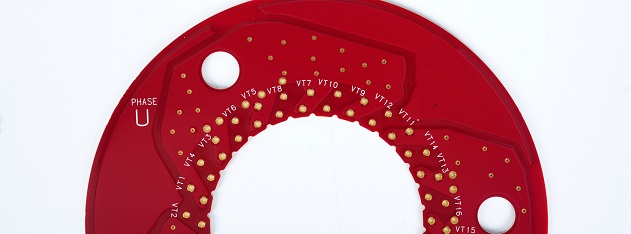
The annular rings are typically made of copper or other conductive materials, forming a connection around the holes to ensure that electrical signals can pass from one layer to another. Without this copper ring, the via would lack the necessary conductive material to transmit electrical signals, leading to potential functionality and reliability issues.
PCB holes usually come in shapes such as circular, square, or oblong. Among these, the circular hole is the most common. These holes are used for mounting components, connecting wires between circuit layers, or linking pads across different layers. When designing a PCB, you can select the appropriate hole shape based on specific needs.
What is an Annular Ring in Physics?
While the concept of the annular ring in PCB manufacturing is straightforward, itās also rooted in basic physics. In physics, an annular ring is a two-dimensional geometric shape characterized by an outer and inner radius, with the space between the two radii representing the actual “ring.” This geometric shape has applications in a variety of fields, from fluid dynamics to optics.
In the context of PCB design, the annular ringās geometry ensures that thereās enough copper material around the hole to support electrical connections and mechanical integrity. Essentially, the annular ring in PCB design mirrors this physical concept, providing the necessary structure to allow electrical signals to flow reliably between layers.
What is the Function of an Annular Ring?
The primary function of an annular ring is circuit connection. The annular ring connects with other circuit layers or components via wires or pins, enabling the transmission and interaction of electrical signals. Without this ring, the via would not have any conductive material to establish the necessary connections, rendering it ineffective. Essentially, the annular ring is like a bridge that connects different parts of the PCB. In addition to this, there are some other functions that apply annular rings in a PCB:
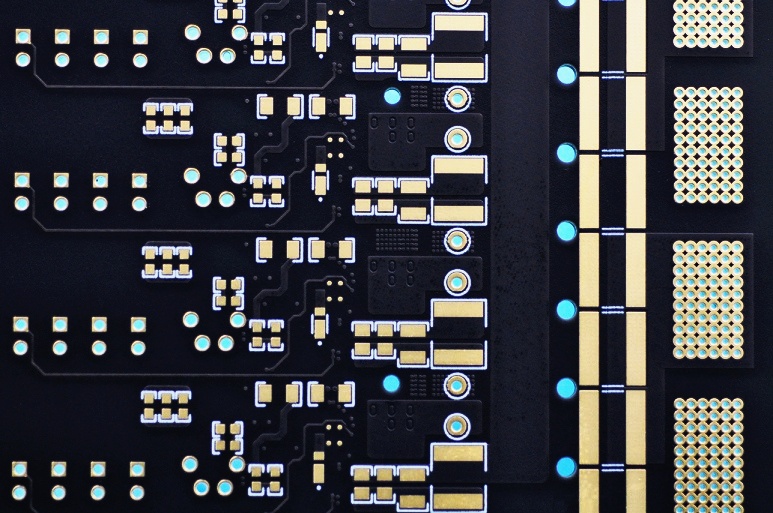
1. Component Mounting
The annular ring is used to secure and connect electronic components (such as integrated circuit chips (IC), diodes, resistors, etc.) to the PCB through their leads or solder balls.
2. Soldering Connection
The metal edge of the annular ring is used for soldering the leads or pads of electronic components, establishing a reliable electrical connection. Through soldering, a physical and electrical bond is created between the component and the PCB.
3. Vias in Multi-Layer PCBs
In multi-layer PCBs, the annular ring serves as a via, acting as a conductive channel that connects different circuit layers. Through these vias, signals, power, and ground lines can be transmitted between layers.
What is the Difference Between Via and Annular Ring?
While vias and annular rings often work in tandem, they are different components of a PCB.
Via:
- A via is a drilled hole in the PCB, gennerally <=0.5mm.
- It is plated with copper to create an electrical pathway.
- Vias provide vertical connectivity between PCB layers.
- They act as the conduits for electrical signals across layers.
Annular Ring:
- An annular ring is the copper pad that surrounds the via.
- It creates a stable landing zone for the via.
- The annular ring enhances solderability and connection strength.
- It also supports the mechanical integrity of the PCB.
Key Differences:
- A via is the actual hole that allows electrical passage; the annular ring is the copper area around that hole.
- Vias serve as internal conductive channels, while annular rings ensure a robust link to the board’s traces.
- Vias are created by drilling and plating; annular rings are defined during the PCB layout design.
In essence, the via acts as a hole or passage for electrical signals, while the annular ring is the surrounding copper that ensures the electrical signals can flow reliably between the different layers of the PCB. Without the annular ring, the via would have no copper to connect it to the surrounding traces, compromising the integrity of the circuit board.
How Do You Calculate the Annular Ring Size?
The annular ring size is determined by the diameter of the via hole and the size of the copper pad around it. To calculate the annular ring size, you need to first measure the diameter of the via hole. Then, you need to determine the size of the copper pad around the hole, keeping in mind that the pad must be large enough to maintain a reliable connection. In general, there are outer annular ring size and inner annular ring size:
Outer Annular Ring Size (OAR)
- Calculate Format:
Outer Annular Ring (OAR) = (Outer pad diameter – Plated hole diameter) / 2
- Actual Case:
Plated hole diameter = Finished hole diameter + 0.10mm (for all PTH) + 0.00mm (for all NPTH).
- Example:
For a copper pad thickness of 0.60mm and a finished hole diameter of 0.30mm (PTH), the calculation of the OAR is:
OAR = [0.60mm – (0.30mm + 0.10mm)] / 2 = 0.10mm
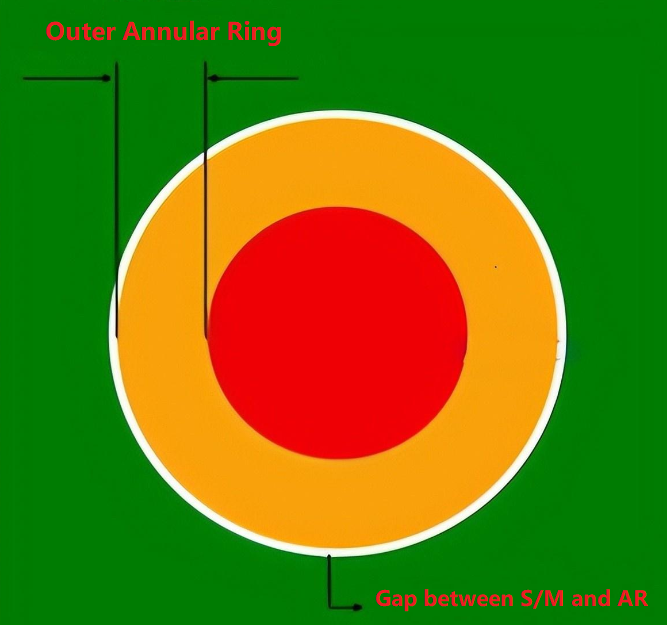
Inner Annular Ring Size (IAR)
- Calculate Format:
Inner Annular Ring (IAR) = (Inner pad diameter – Electroplated hole diameter) / 2
- Actual Case:
Electroplated hole diameter = Finished hole diameter + 0.10mm (for all PTH) + 0.00mm (for all NPTH).
- Example:
For a 0.50mm copper pad and a 0.20mm finished hole diameter (PTH), the calculation of the IAR is:
IAR = [0.50mm – (0.20mm + 0.10mm)] / 2 = 0.10mm
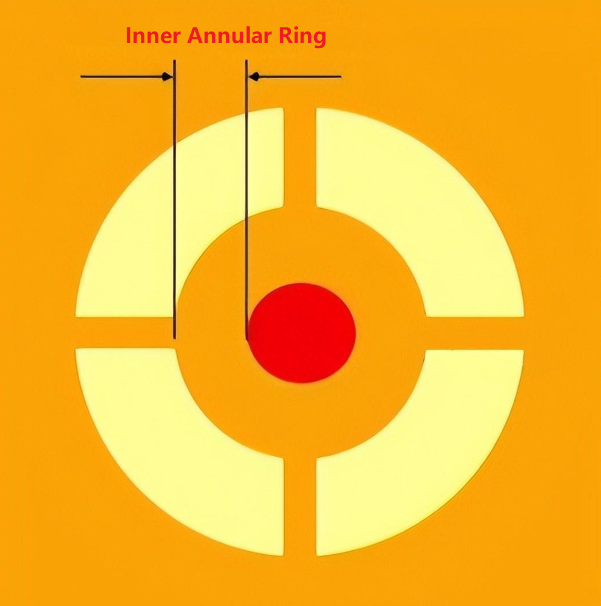
What is the Minimum Annular Ring Size on a PCB?
The minimum annular ring (AR) on a PCB refers to the minimum amount of copper between the edge of the pad and the electroplated hole. The width of the minimum annular ring should be greater than or equal to the value defined in the PCB design.
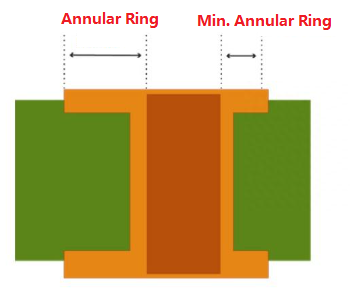
When the annular ring is smaller than the specified width, the attachment of components may be affected, and there is a risk of pad cracking. In this case, the circuit may enter the pad, minimizing the current-carrying capacity of the circuit.
Sometimes, the traces on the PCB need to connect to another layer. In such cases, the trace eventually passes through the pad. The via in the pad helps the trace move through and connect to another layer.
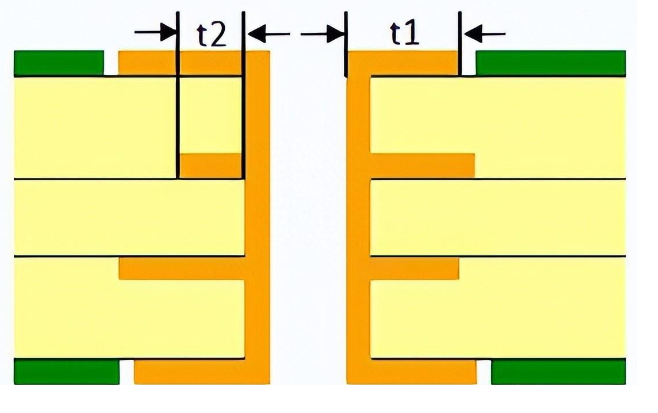
- t1: Minimum outer annular ring, on finished boards, must be >= 0.05mm.
- t2: Minimum inner annular ring, on finished boards, must be >= 0.01mm.
Common Annular Ring Issues During PCB Manufacturing
Despite the importance of annular rings, issues can arise during the manufacturing process that impact their effectiveness. Some common problems include:
- Undesired Annular Rings
Undesired annular rings are a common issue that affects many designers when working with standard PCBs. If the pad size is too small, the PCB may not function properly because the hole takes up more space on the pad. To avoid this issue, making a prototype before mass production is necessary. Prototypes can prevent unnecessary annular rings from appearing before large-scale production of the circuit boards.
- Missing Annular Ring
A missing annular ring can occur if the design does not include an annular ring around the via, or if the annular ring was not correctly produced during manufacturing. This can lead to poor electrical connections, affecting the performance of the circuit.
- Broken Annular Ring
A broken annular ring occurs when drill tolerances cause the via to deviate from the center during manufacturing, leading to the annular ring breakout.

- Annular Ring Tangency
Annular ring tangency refers to a situation where part of the via touches the edge of the pad, typically caused by the drill bit not being aligned with the markings. This can cause the via to deviate from the center and negatively affect the normal operation of the circuit.
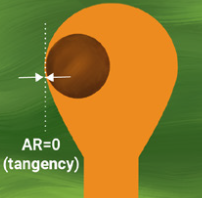
What Can Best Technology Do for You?
At Best Technology, we have over 18 years of experience in PCB manufacturing, and we understand the importance of the annular ring in creating reliable and high-quality PCBs. Our team of experts works closely with clients to ensure that every PCB is designed with the right annular ring specifications, minimizing the risk of defects and improving the overall performance of the circuit board. In additional to this, our sales-assistant will send EQ (engineer question) file and WF (working file for manufacturing) to customer for a final approval before starting production.
We use state-of-the-art equipment and precision techniques to manufacture PCBs that meet the highest standards. Whether youāre designing a single-layer PCB or a complex multi-layer board, Best Technology has the expertise and experience to deliver high-quality PCBs that meet your needs. Weāre here to support your projects and ensure that your PCBs are reliable, efficient, and built to last.
Let us help you create the perfect PCB with the right annular ring design to ensure seamless electrical connections and superior functionality. Reach out to Best Technology today for your PCB needs!


